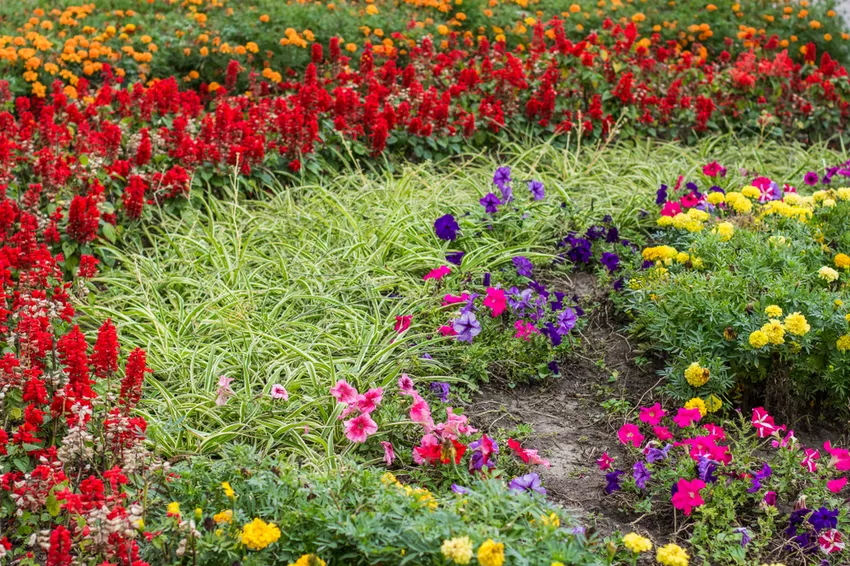- You have to pay attention to this when creating the bed
- Suitable perennials in the most beautiful colors
A colorful flower bed is simply fun, as the numerous colors lift the spirits and get you in the mood for summer. Read what is actually important when putting plants and colors together.
 Flower beds add color to the garden
Flower beds add color to the garden
You have to pay attention to this when creating the bed
After all, a flower bed shouldn't be thrown together in a colorful way, but you should look carefully at which plants and colors go together. This is not only useful for a harmonious overall picture, but also important for plant health.
location and soil
This includes, for example, only putting species that fit together in terms of location and care needs in a bed. Mediterranean plants, for example, will not get along with outright shade plants, heavy feeders not with those that prefer poor soil. It is best to first select the perennials that you like - and then see whether they harmonize in terms of their needs for light, soil composition, nutrients and moisture. Then it is easier to sort and select.
plant combination
Once this is done, the specific plant selection follows. Whether you are planning a multi-colored or single-colored bed is entirely up to your taste. Flower beds, for example, are impressive, which play with a strong main color - for example yellow or red - and in which ornamental leaf plants, grasses and individual perennials in a contrasting color are planted to loosen up the space. Pure white beds - combined with grey, green or blue dots - also attract attention.
Suitable perennials in the most beautiful colors
The following selection gives you some colorful perennials that not everyone has in the garden.
- White flowers: Silverrue (Artemisia ludoviciana 'Silver Queen'), Gypsophila (Crambe cordifolia), Balkan cranesbill (Geranium macrorrhizum 'White Ness'), Larkspur (Delphinium belladonna hybrid 'Moerheimii'), Summer sage (Salvia nemorosa 'Snowhill '), foxglove (Digitalis purpurea 'Snow Thimble'), yarrow (Achillea decolorans), coneflower (Echinacea purpurea 'Alba'), tall summer phlox (Phlox paniculata 'Pax')
- Yellow flowers: purple coneflower (Rudbeckia), coneflower (Heliopsis helianthoides var. scabra), coneflower (Helenium), perennial sunflower (Helianthus decapetalus), dyer's chamomile (Anthemis), daylily (Hemerocallis 'Berlin Lemon' or 'Invictus')
- Red flowers: purple coneflower (Echinacea 'Fatal Attraction'), blood cranesbill (Geranium sanguineum 'Elsbeth'), cushion aster (Aster x dumosus 'Jenny'), red hollyhock (Alcea rosea 'Mars Magic'), coneflower (Helenium 'Indianersommer') ), garden lupine (Lupinus polyphyllus 'Edelknabe'), red flowering spurflower (Centranthus ruber 'Coccineus')
- Pink flowers: Phlox paniculata 'Sweet Summer Fragance', herbaceous peony (Paeonia lactiflora 'Miss Eckhardt'), cushion aster (Aster x dumosus 'Rosenwichtel'), bergenia (Bergenia cordifolia 'Autumn Blossom'), coneflower (Echinacea 'Purple Emperor')
- Purple and blue flowers: Magnificent cranesbill (Geranium x magnificum 'Rosemoor'), oregano (Origanum vulgare 'Compactum'), verbena (Verbena bonariensis 'Lollipop'), sweet nettle (Agastache 'Blue Boa'), large-flowered catnip (Nepeta grandiflora ' Bramdean'), monkshood (Aconitum carmichaelii 'Arendsii')
tips
When designing, a few key perennials determine the picture, which are framed by filler and cushion perennials as well as leafy plants and grasses.